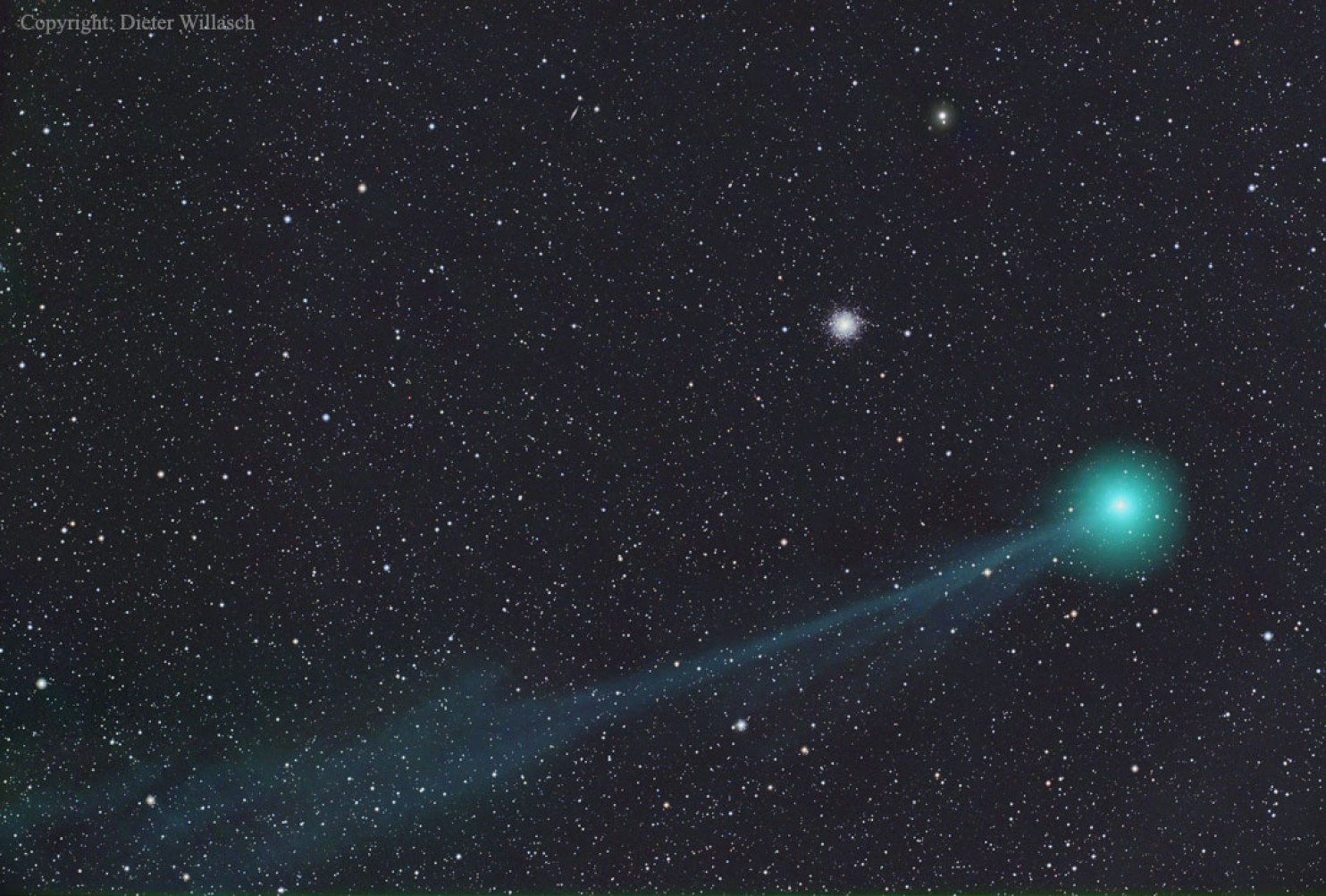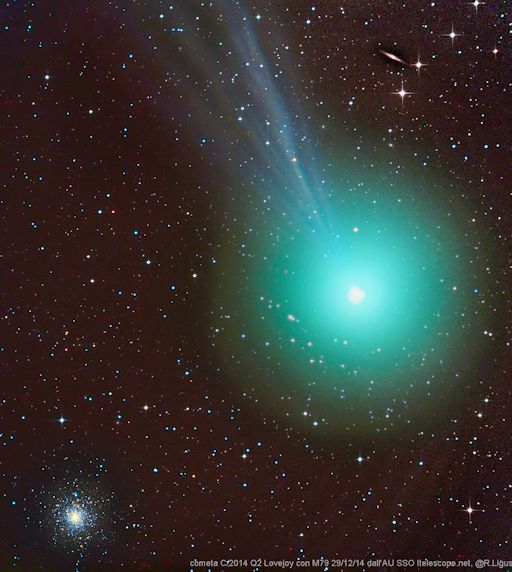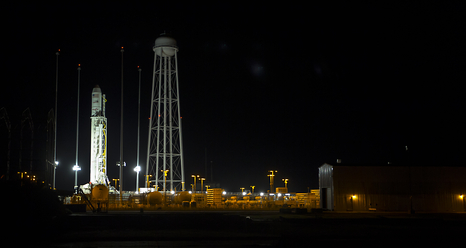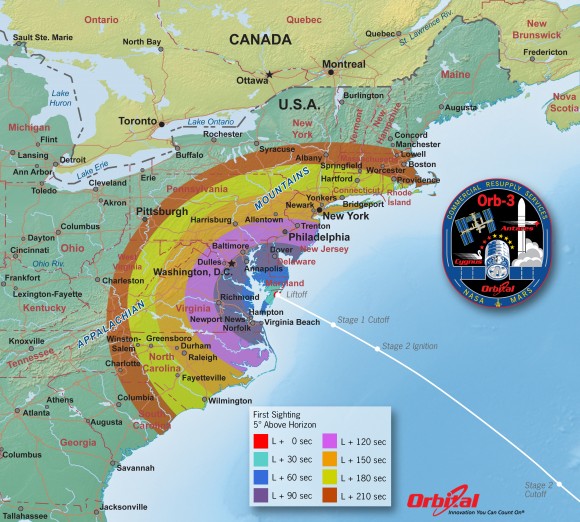10:50 AM | An update on Comet Lovejoy...now in its best two weeks
Paul Dorian
 [Image of Comet Lovejoy; courtesy Washington Post's Capital Weather Gang]
[Image of Comet Lovejoy; courtesy Washington Post's Capital Weather Gang]
Discussion
Overview Comet Lovejoy, C/2014 Q2, is in the midst of its best two weeks. Comet Lovejoy is now about magnitude 3.8, and it should remain that bright all week. On January 7th the comet passed closest by Earth, at a distance of 0.47 a.u. (44 million miles; 70 million km). Although the comet is receding from us now, its intrinsic brightness should still be increasing a bit. That's because it doesn't reach perihelion (its closest to the Sun) until January 30th (at a rather distant 1.29 a.u. from the Sun). By that date, the comet should finally be fading slightly from Earth's point of view.
Where to look Comet Lovejoy is high in the early-evening sky for binoculars or low-power, wide-field telescope viewing. It's also dimly visible to the unaided eye under dark-sky conditions — if you know exactly where to look! According to the Washington Post’s Capital Weather Gang, you’ll find Comet Lovejoy high enough around 8 p.m. (and the later hours too) to the right of the constellation Orion and just under the constellation Taurus. Think of the three stars (Alnitak, Alnilam and Mintaka) of Orion’s belt as a pointer toward the comet, because if you look carefully in a very dark sky, you could see a faint glow. By Thursday, Friday and Saturday, the comet will pass to the right of the Pleiades cluster – also know as the Seven Sisters or Messier 45. Our original story on Comet Lovejoy with links to finder charts can be found at http://vencoreweather.com/2014/12/31/1000-am-comet-lovejoy-rings-in-the-new-year/. Skies may be clear this evening for comet viewing; however, clouds are likely to roll in from the south by late tonight.
 [Finder chart for tonight, January 13th; map courtesy Andrew Ochadlick and heavens-above.com]
[Finder chart for tonight, January 13th; map courtesy Andrew Ochadlick and heavens-above.com]

 [Image of Comet Lovejoy on 12/29/14; courtesy "spaceweather.com"]
[Image of Comet Lovejoy on 12/29/14; courtesy "spaceweather.com"] PHOTO: Comet 67P/Churyumov-Gerasimenko is seen in a photo taken by the Rosetta spacecraft with the OSIRIS narrow-angle camera August 3, 2014.
PHOTO: Comet 67P/Churyumov-Gerasimenko is seen in a photo taken by the Rosetta spacecraft with the OSIRIS narrow-angle camera August 3, 2014. [Antares rocket on launch pad this weekend]
[Antares rocket on launch pad this weekend] [Another view of the Antares rocket]
[Another view of the Antares rocket] Orbital 3 Launch from NASA Wallops Island, VA on Oct. 27, 2014 - Time of First Sighting Map. This map shows the rough time at which you can first expect to see Antares after it is launched on Oct. 27, 2014. It represents the time at which the rocket will reach 5 degrees above the horizon and varies depending on your location. As an example, using this map when observing from Washington, DC shows that Antares will reach 5 degrees above the horizon approximately 117 seconds after launch (L + 117 sec). Credit: Orbital Sciences
Orbital 3 Launch from NASA Wallops Island, VA on Oct. 27, 2014 - Time of First Sighting Map. This map shows the rough time at which you can first expect to see Antares after it is launched on Oct. 27, 2014. It represents the time at which the rocket will reach 5 degrees above the horizon and varies depending on your location. As an example, using this map when observing from Washington, DC shows that Antares will reach 5 degrees above the horizon approximately 117 seconds after launch (L + 117 sec). Credit: Orbital Sciences
 [Northern lights visible last night in Arizona from the initial CME; photo courtesy spaceweather.com]
[Northern lights visible last night in Arizona from the initial CME; photo courtesy spaceweather.com] [Impact on NASA's ACE spacecraft just a short time ago (arrow) from the arrival of the second CME; courtesy NOAA/Space Weather Prediction Center]
[Impact on NASA's ACE spacecraft just a short time ago (arrow) from the arrival of the second CME; courtesy NOAA/Space Weather Prediction Center]

 [Sunspots sketched by Richard Carrington on Sept. 1, 1859. Copyright: Royal Astronomical Society]
[Sunspots sketched by Richard Carrington on Sept. 1, 1859. Copyright: Royal Astronomical Society] ["Bloody red" moon during a total eclipse in December 2010]
["Bloody red" moon during a total eclipse in December 2010]